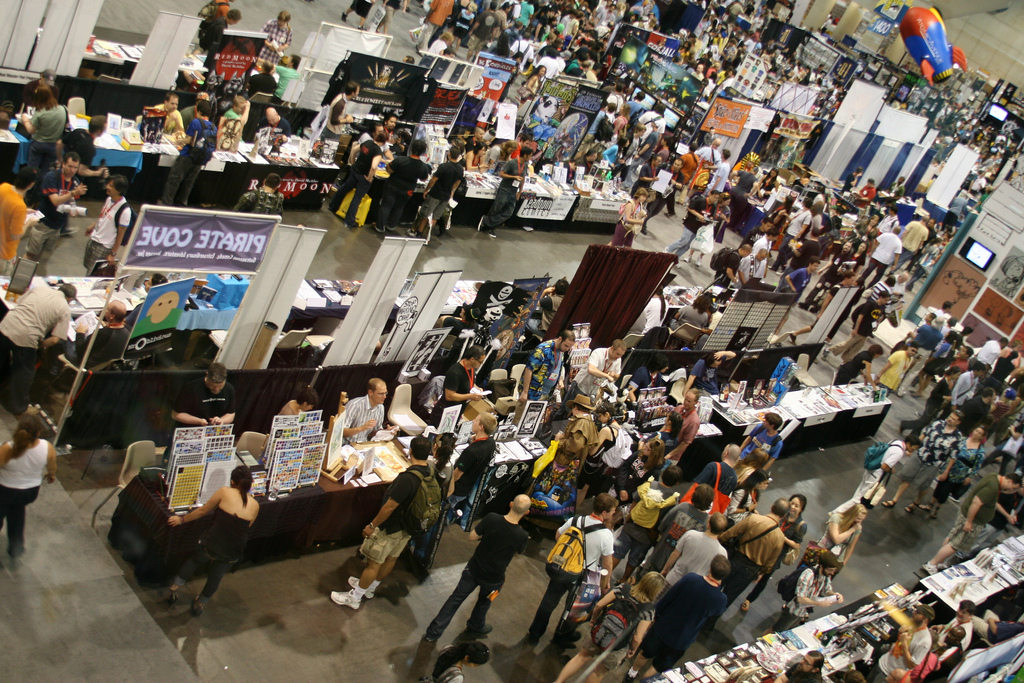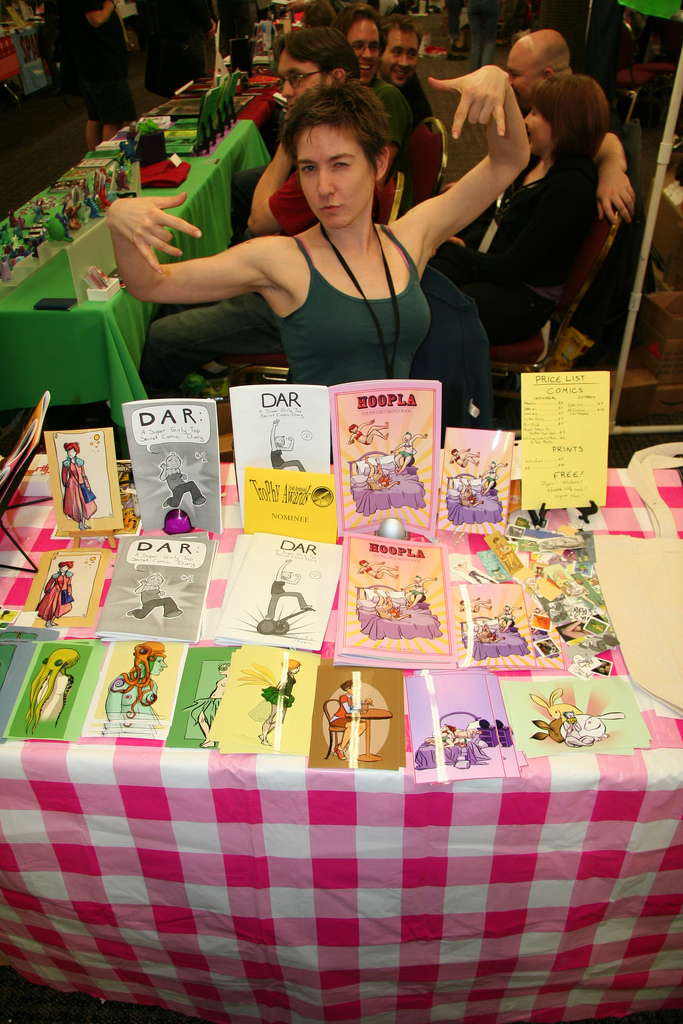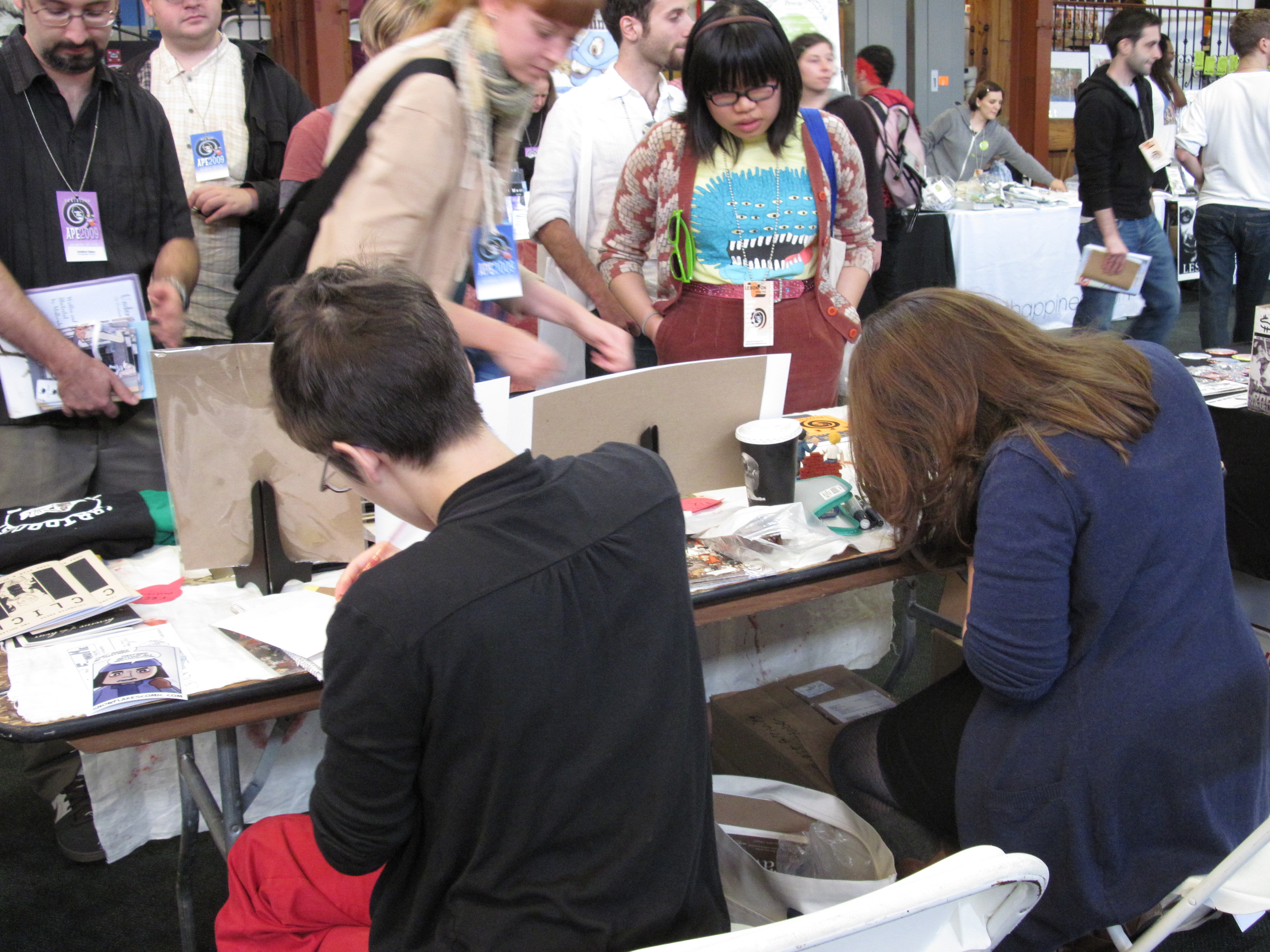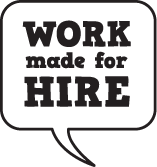Gettin’ Fancy with the Negotiation Skillz
Way back when we started hanging out, I talked a wee bit about the concept of “anchoring.”
Anchoring is what happens when one party in a negotiation names a price, a due date or a list of deliverables. That number is the number all other suggestions, negotiations, conversation and demands will be measured against.
Once an anchor has dropped it is very hard to move, even when it’s wrong.
Anchoring is a simple concept, but it can be hard to wrap your head around. Once you understand it, though, it can be one of the easiest ways of controlling a negotiation and protecting yourself from less than honorable counterparts.
“But Katie,” you’re thinking, “why would I ever want to anchor? It sounds complicated and fancy.”
My friend, have you ever gone to a comic book convention?

Because there are anchors dropping all over the place at comic book conventions. For instance:
Buy my book!

Erika Moen, whose book is awesome
Most books at conventions regardless of quality, style or manner of publication come with one common feature: a price.
A price is a seller’s anchor. It sets the most anyone will pay for the book.
If the price is $10, no one is going to walk up and offer $20 to buy one, but they might try to offer less.
Let’s say I want to buy 15 of those $10 books for resale at my comic book shop. I don’t want to pay you $150 for the books because I won’t be able to make any money off of the sale (that price anchors me, too). Instead, I offer you $75 for 15 books, or 50% off cover price, an “industry standard.”
Now, because you know I am a local vendor who trucks these books back to her store in her personal car, that I made back my costs for the con in the first 3 hours and that you could move 15 books all on your own, you counter with a perfectly reasonable $100. I accept because blindly following “industry standards” without any context is, ehem, silly. [cough, cough, hint, hint]
In our negotiation you and I used the price (a.k.a the anchor) as a hard reference point that we did not question and it informed our offers to one another.
That’s what an anchor does.
And that’s why you want to be thoughtful and intentional when you have to anchor. If you anchor too low in a situation like this, you make it harder to break even or to build a nest egg of profit to fund future projects. It also makes it harder to quickly figure out a mutually beneficial deal with a really big customer (like that shop owner).
Draw me a picture!

Dylan Meconis (lutherlevy.com) & Kate Beaton (harkavagrant.com)
Now let’s talk about an area where a lot of folks let their fans do the anchoring: convention sketches.
Very basically speaking, it is good to anchor when you know a lot; it is not good to anchor when you don’t know a lot.
Why?
Well, when you are well informed, you tend to know more about the actual cost of things, so you tend to be able to better gauge what is and isn’t a “good” deal. When you are underinformed, but eager to negotiate (that is, you want something), you can under or overestimate the value of things. That inability to estimate often translates into paying too much or charging too little if you make the first (anchoring) offer.
At conventions, who has the most knowledge about the value of a sketch?
Well, that artist knows how much time it will take, how valuable that time might be to her in relation to other things she might be doing, how many other people have asked for sketches and if her arm is about to fall off.
The fan asking for the sketch likely knows how flipping nervous they are to ask for it in the first place, what they’re going to do with it, how much they personally value that artist’s work and how much cash they have left in their pocket.
If the artist anchors, she runs the risk of asking for too little money for the work (because who knows, maybe the fan has $75 set aside specifically for a commissioned sketch from that artist).
If the fan anchors the artist might be left in a position of having to entertain an offer of “two bottle caps, half a candy bar and my undying love and affection, ohmygod!”
Neither person is in a perfect position to anchor because both people know a lot about their perception of value, but not a whole bunch about the other person’s.
What to do?
Drop a hook: something that sets a bare bones floor but clearly communicates you’re interested in negotiating. A sort-of anchor, if you will.
For the artist that might be something like a sign that says, “Sketches: $10 and up, depending on awesomeness” or when asked for a sketch replying “Well, how much were you wanting to spend?”
For the fan, that might be approaching the artist and saying, “I wanted to get a sketch from you to give to my girlfriend for her birthday; she loves Thomas Jefferson. What would be the difference between a $10 sketch and a $25 sketch?”
What not to do: not say anything about money because you’re too embarrassed.
Seriously. No more signs that don’t have some sort of price on them and no more getting upset because the elaborate thing you described but didn’t ask the price of that took 30 minutes to draw costs $20.
So what are we going to do at the next convention?
Wear a super fun outfit of ridiculousness: CHECK.
Find lots of nifty comics: CHECK.
Have a lot of fun despite whatever environmental temperature related fussage is happening: CHECK.
Negotiate intentionally & respectfully: you-bet-your-sweet-CHECK.
Categories: Negotiation Strategy


